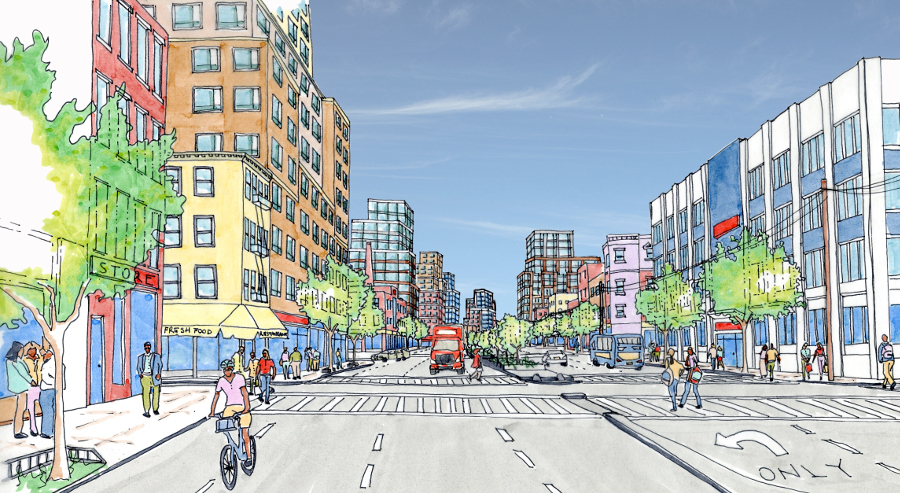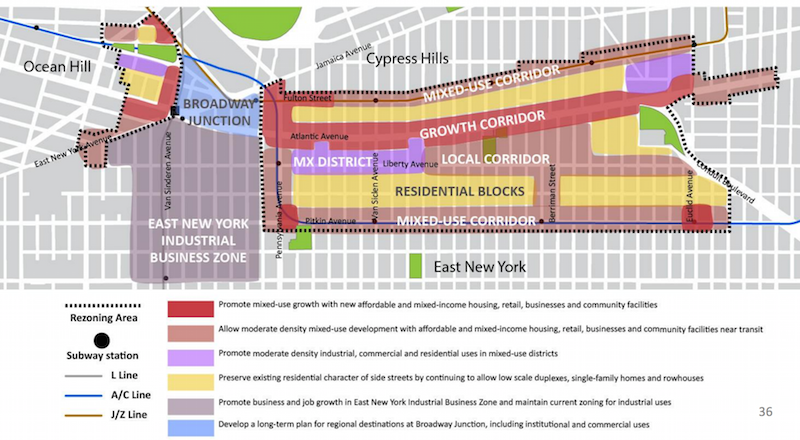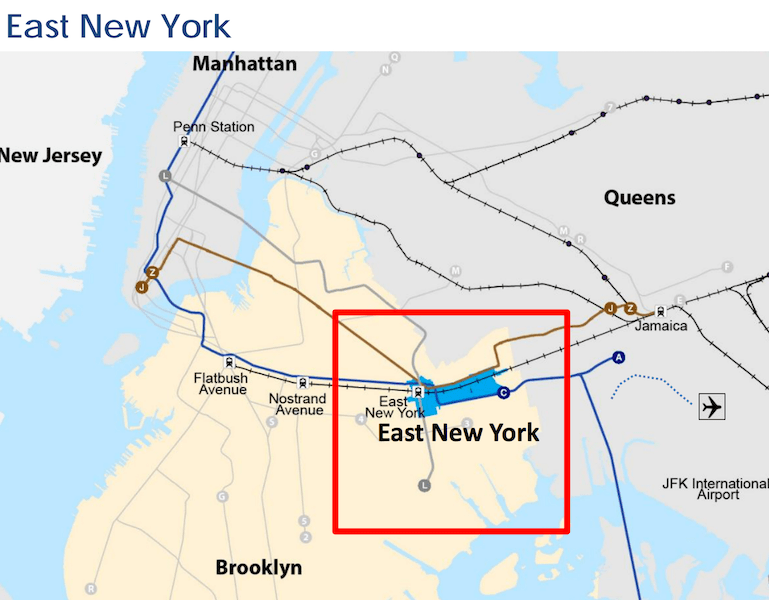Brooklyn Borough President Eric L. Adams yesterday said while he is generally supportive of the of the City’s intent behind its’ massive proposed rezoning of roughly 200 blocks covering Cypress Hills, East New York and Ocean Hill, he continues to see a number of issues that still need addressing.
Adams recommendations on the plan came as part of the Uniform Land Use Review Procedure (ULURP) process on the city’s application, which includes large upgrades in height limitations and thousands of units of housing, half of which will be affordable.

“As the City looks to rezone neighborhoods like East New York, the first of a proposed 15 efforts across the five boroughs to stimulate the development of affordable housing, it is vital that opportunities for its long-time residents are developed and ensured as well,” said Adams.
“Rezonings over the past decade in Coney Island, Downtown Brooklyn, Greenpoint, and Williamsburg have left Brooklynites understandably concerned about the attention to fighting displacement and the dedication to fulfilling promised aspects of community development. While I am generally supportive of the plan’s intent, I must also be clear in echoing a number of issues that have been raised during the public review process which, if left unaddressed, could result in unsatisfactory outcomes for all stakeholders,” he added.
Recognizing the added rental pressures that the proposed rezoning will have on existing residents living in housing not subject to rent regulation, Adams expressed the importance of achieving permanent affordability for affordable housing units created through the East New York Community Plan, beyond the proposed 25 percent requirement of any new residential development with more than 25 units.
In particular, Adams focused on achieving agreements of permanent affordability at the City-owned Dinsmore-Chestnut Urban Renewal disposition site and scattered New Infill Homeownership Opportunities Program (NIHOP) sites, as well as the City-financed former Chloe Foods site.

Adams also called for accountability to put in place and sustain the anti-displacement initiatives the City has proposed in their East New York Community Plan, including code enforcement by the New York City Department of Housing Preservation and Development (HPD) and funding for free legal representation in housing court for all tenants facing harassment.
Additionally, he said that “despite the intended initiatives, there remains much concern regarding the potential for displacement” on additional sites — identified through an analysis by his office — which may be attractive for future development, including approximately 90 units that are occupied in Arlington Village.
Efforts that he proposed engaging in to address this include the potential implementation of anti-harassment areas, creation of tax incentive options for small property owners in return for indexing rental unit lease renewals to increases by the Rent Guidelines Board (RGB), and cataloguing of government-assisted housing with expiring affordability requirements to proactively protect affordable housing units.
Adams also outlined a proposed commitment of 50 percent preference for new area housing to residents of Community Districts 5 and 16, inclusive of former residents who were previously displaced, with targeted educational resources and marketing outreach. He also encouraged the City to increase the supply of very-low and low-income affordable housing through new opportunities that have not been under consideration thus far, including the Grant Avenue Field municipal parking facility, the site previously considered for the Brownsville Community Justice Center, as well as development rights possessed by local NYCHA properties and the PS 178 St. Clair McKelway annex.
Adams highlighted that this effort should be extended to houses of worship with development rights, following the successful engagement with clergy across the borough as part of his Faith-Based Property Development Initiative.

His anti-displacement strategy also included zoning text amendments to encourage deeper and more flexible bands of affordability in new housing, a study of proposed residential districts to better match the allowable zoning — including the potential for targeted downzoning to combat displacement — as well as a codification of the minimum threshold for family-sized units on HPD-owned and HPD-financed sites.
Regarding commercial development related to the rezoning proposal, Adams reiterated his general displacement concerns and asked for an assurance of access to Food Retail Expansion to Support Health (FRESH) grocery stores, ensuring that any lost supermarkets are replaced on site. His recommendations highlighted the need to support local entrepreneurs and artisans who provide quality local jobs, impacting his call for a restriction on big-box retail in the rezoned area and financial incentives to prevent commercial displacement.
In particular, he noted the need to strengthen and preserve the East New York Industrial Business Zone (IBZ), inclusive of promoting new urban agriculture uses. In keeping with his past ULURP recommendations, Adams articulated the importance of local hiring and the retention of Brooklyn-based contractors and subcontractors, especially those who are designated locally-based enterprises (LBEs) and minority and women-owned business enterprises (MWBEs).
Adams’ recommendations were given to the City Planning Commission (CPC) at last night’s public meeting at Borough Hall as part of the ULURP process.
The Planning Commission is expected to vote on the plan and submit their recommendations to the city council for a final vote at the end of February.







